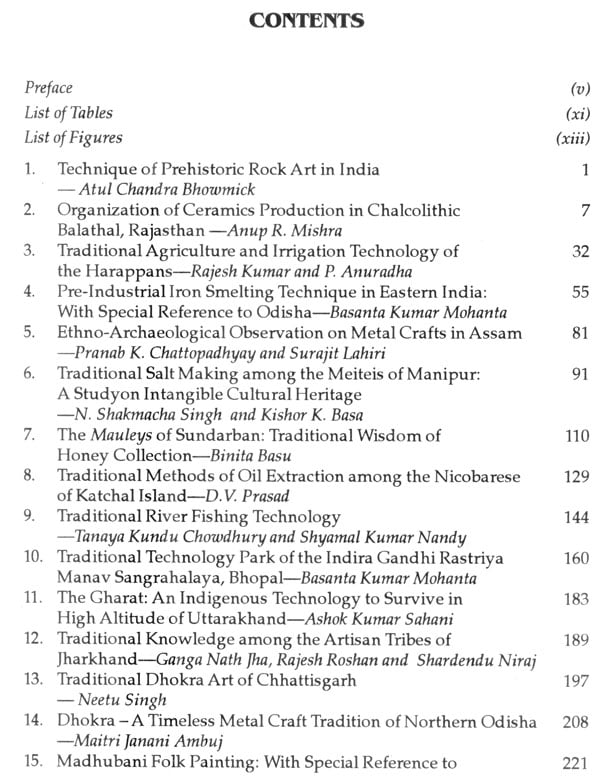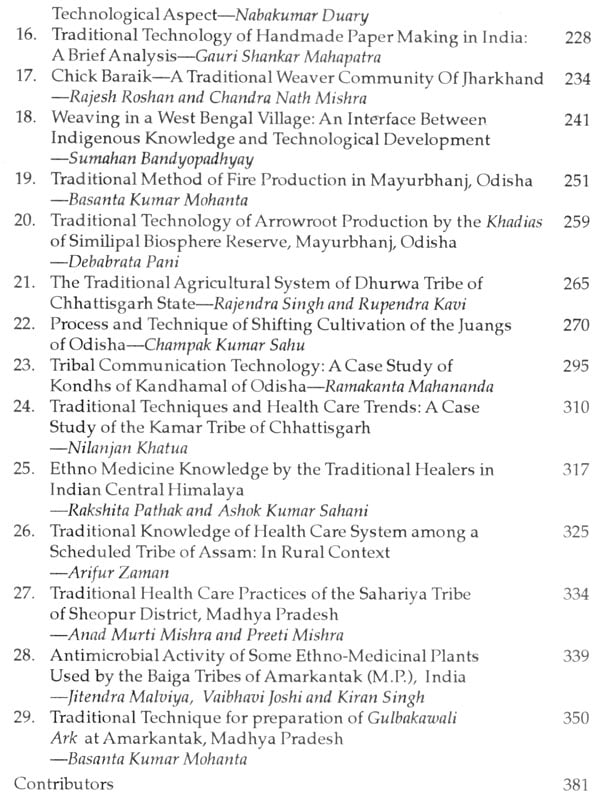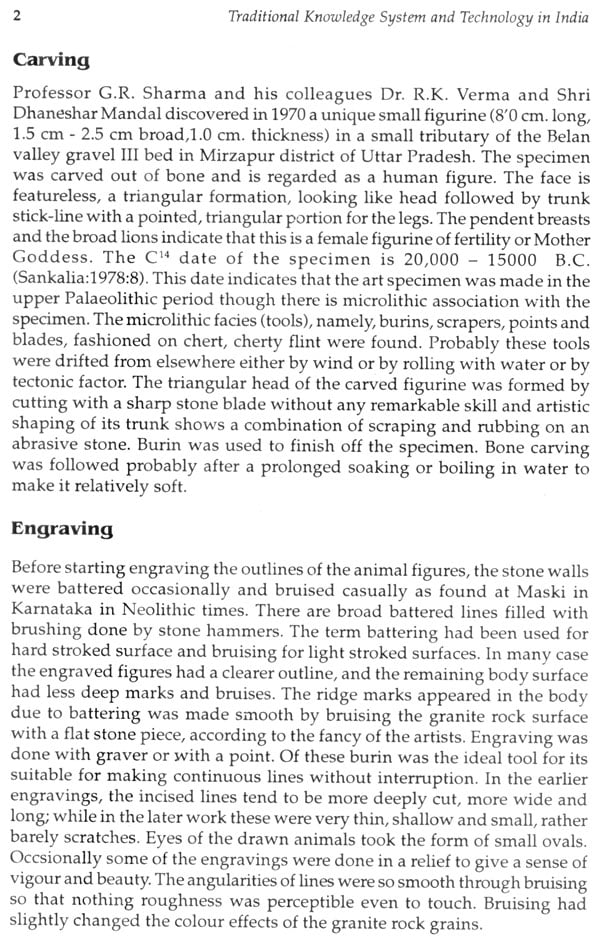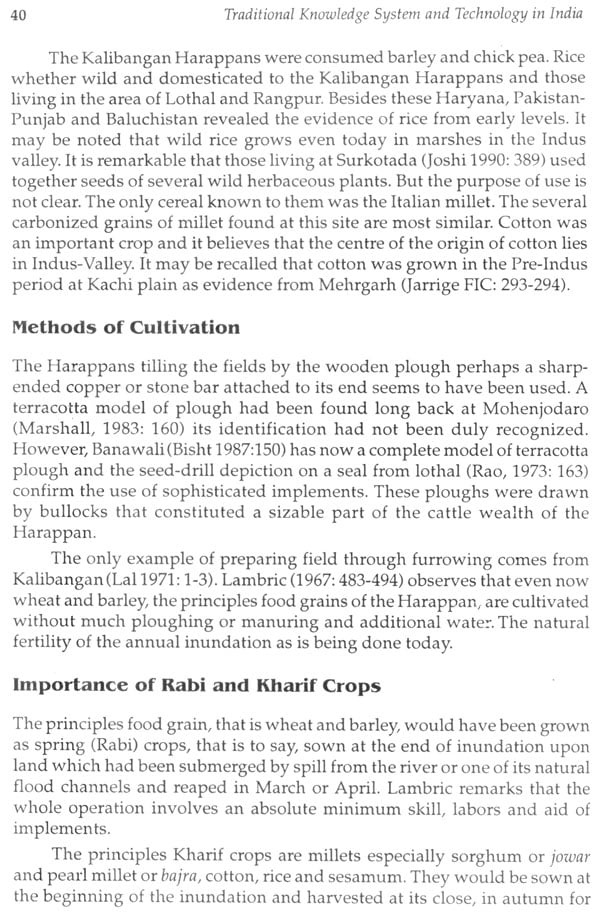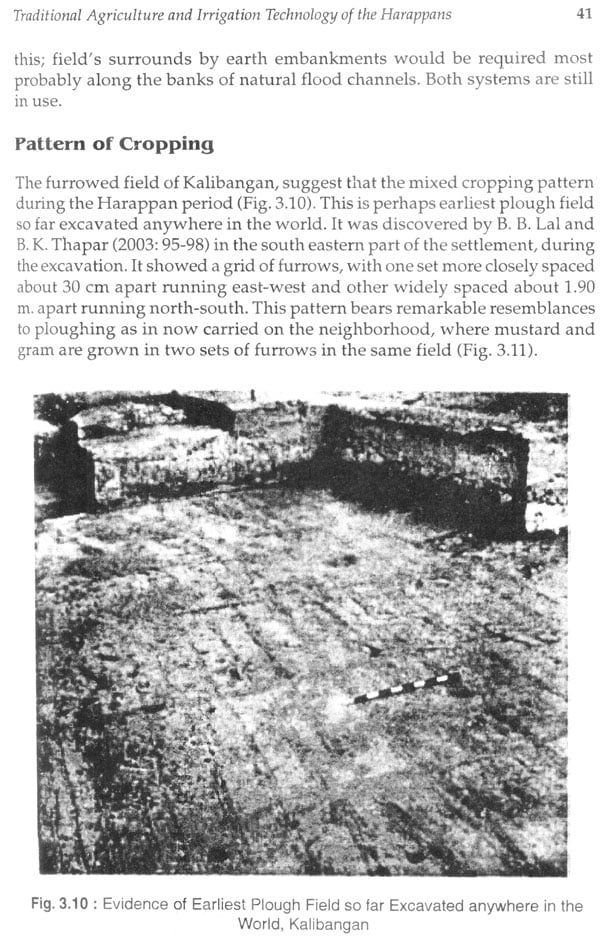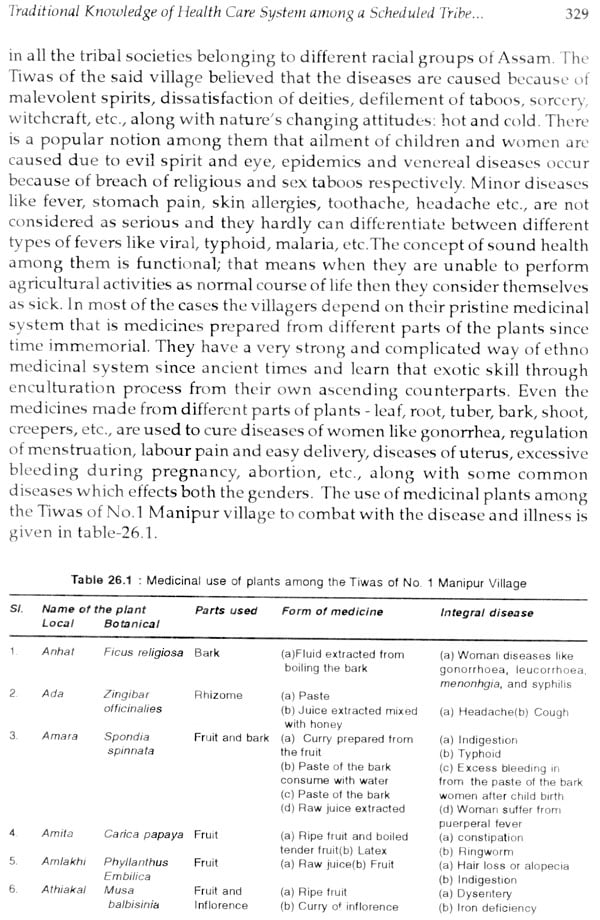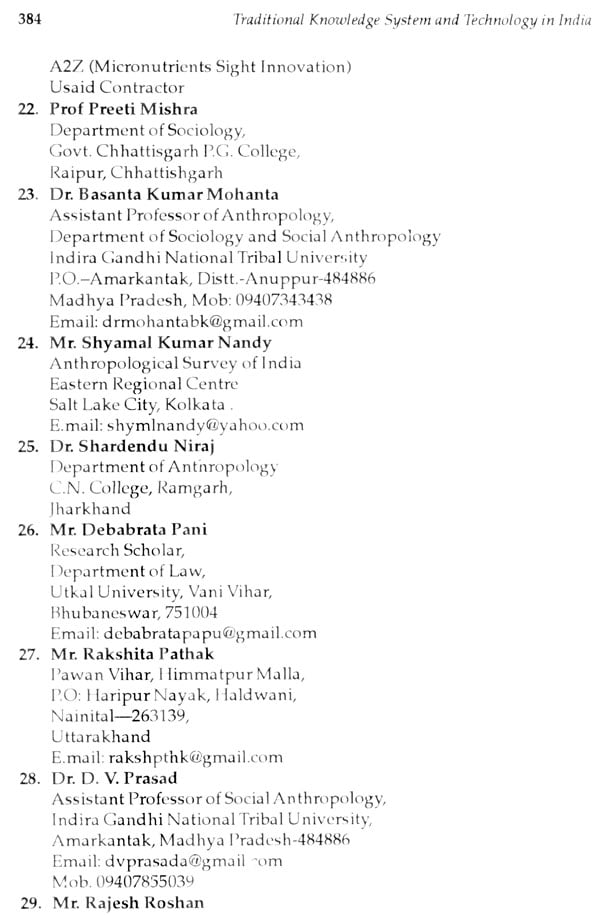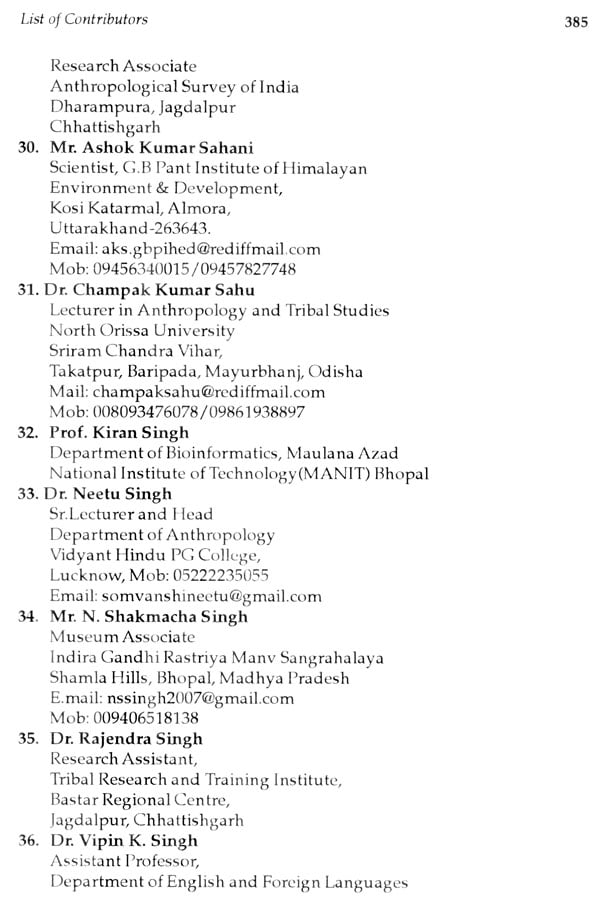
Traditional Knowledge System & Technology in India
Book Specification
| Item Code: | NAY663 |
| Author: | Basant Kumar Mohanta & Vipin Kumar Singh |
| Publisher: | Pratibha Prakashan |
| Language: | English |
| Edition: | 2012 |
| ISBN: | 9788177023107 |
| Pages: | 406 (Throughout B/w Illustrations) |
| Cover: | HARDCOVER |
| Other Details | 10.00 X 7.50 inch |
| Weight | 980 gm |
Book Description
Because of the industrialization, modernization, globalization etc. this traditional knowledge system and techniques are disappearing rapidly from the world. The present book is an effort to record, conserve, preserve as well as to create awareness for this knowledge system to rescue these vanishing traditional techniques.
Traditional Knowledge System and Technology in India foregrounds the eco- friendly scientific developments of the people of India who lived and still is living a life of crises in remote areas. This book contains 29 articles on different aspects of traditional knowledge systems and technologies, practiced by the tribal and rural folk of different parts of the India, covering the area of prehistoric, protohistoric, historic as well as the ethnographic contexts. The important sub-areas covered by this book includes, traditional economic activates, health care system, art and crafts, irrigation and water management systems, communication, natural resource management etc.
This book will be useful for the anthropologists, archaeologists, industrialists, scientists, environmentalists, ethno botanists, GOs, administrators, researchers and academicians etc.
The present volume contains 29 articles, covering the diverse aspects of traditional knowledge system and technologies of different people, right from the prehistoric time to contemporary societies, residing across the country. The important sub-themes covered in this volume includes, traditional agriculture, irrigation and water management system; traditional art and crafts; traditional economy; traditional communication system; traditional knowledge system of natural resources management; and the traditional health care system.
In the first paper, Bhowmick has discussed about the prehistoric rock art technique, which our palace ancestors had made on their rock shelters. He has analyzed the different types of carving, engraving and painting present in the rock shelters in different parts of the country.
In his paper, Mishra has tried to explore various skills of the chalcolithic potters of Balathal, Rajasthan. Based on the ethno archaeological as well as microscopic and macroscopic studies he suggested a separate phylogeny for the ceramic of Ahar culture. He has discussed about the evolution of ceramic industry in different phases as well as the ceramic technology of the modern potters of the region.
Rajesh Kumar and Anuradha' have empirically examined the traditional agriculture and irrigation technology of the Harappa’s. Based on the available archaeological evidences they have tried to discuss the method of cultivation, pattern of cropping, use of chemical fertilizers, soil, tools and implements used for this cultivation, irrigation system etc.
Introduction of iron brings a drastic change in human life and culture.
Earlier, it was believed that the iron smelting technology of India was diffused from abroad but the recent discoveries and available dates able to prove its indigenous evolution. In his article 'Pre-Industrial Iron Smelting Technique in Eastern India: With Special Reference to Odisha' Mohanta has tried to discuss about the presence of such type of indigenous preindustrial iron smelting techniques practiced by the denizens of eastern India in general and Odisha in particular. Here, a discussion is made on the distribution of such kind of iron smelting localities, essential metallurgical components like, ore, iron smelting furnace, slag, tuyere, ingot, charcoal making furnace and technique of iron smelting based on the ethnographic data.
Chattopadhyay and Lahiri deal with the metal craft technology of Assam. They have tried to analyze metallurgical component of different utensils and other products and their manufacturing techniques.
Singh and Basa attempted to uncover a unique Salt Making technique practiced by the Meiteis of Manipur. Their paper is an outcome of the field investigation conducted at Ningel village in the Thou bal district of Manipur, where traditional method of salt making is still in practice. This work not only have stressed upon the traditional knowledge system of the community but an attempt has also been made to explore some of the intangible aspects and their relevance to the socio-economic and religious sphere of both the hills men and plainsmen in Manipur. The religious beliefs and practices, concerning with the use of salt among them are also tried to incorporate in this paper to know the importance of these practices in maintaining strong and peaceful social relations. The paper also examines the parameters of those problems faced out of change of context, when these traditional salt makers were displaced from their own working environment to a new environment for making salt.
Basu has explained the traditional technique of honey collection practiced by the Mauleys of Sundarban, West Bengal. Her paper emphasizes on the different socio-cultural aspects of the life of the Mauleys, the art of honey collection and their struggle for existence in the adverse environment of Sundarban. The author has also discussed the role of forest department, religious practitioners, female members, folklore and taboo associated to the activity.
Book's Contents and Sample Pages
